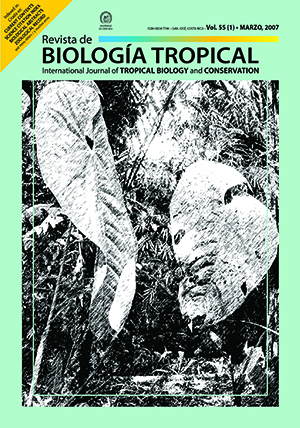Abstract
Capturing small carnivores is often necessary for obtaining key ecological data. We compared the efficiency of box and leg-hold traps, using live and dead bait, to capture six carnivore species (Herpailurus yagouaroundi (É. Geoffroyi, 1803), Leopardus tigrinus (Schreber, 1775), Nasua nasua (Linnaeus, 1766), Cerdocyon thous (Linnaeus, 1766), Eira barbara (Linnaeus, 1758), and Galictis cuja (Molina, 1782)). The use of leg-hold traps significantly increased the capture rate of carnivores (5.77%) and non-target species (non-carnivores, 11.54%). Dead bait significantly attracted more non-carnivores than carnivores and live bait was more efficient for capturing carnivores (2.56%) than non-carnivores (0.77%). Both box and leg-hold traps caused some minor injuries (swelling and claw loss). We provide recommendations for the ethical use of these trap and bait types.##plugins.facebook.comentarios##

This work is licensed under a Creative Commons Attribution 4.0 International License.
Copyright (c) 2007 Revista de Biología Tropical
Downloads
Download data is not yet available.






